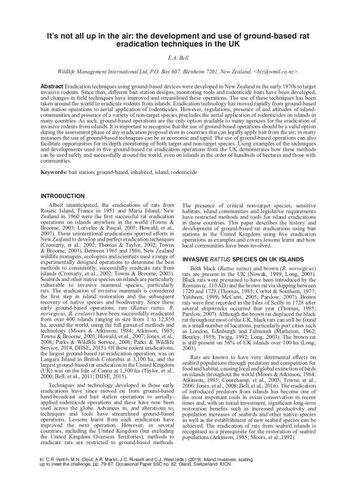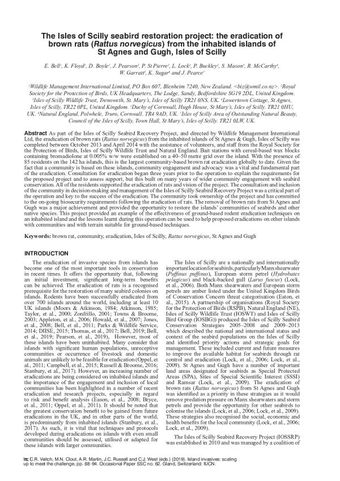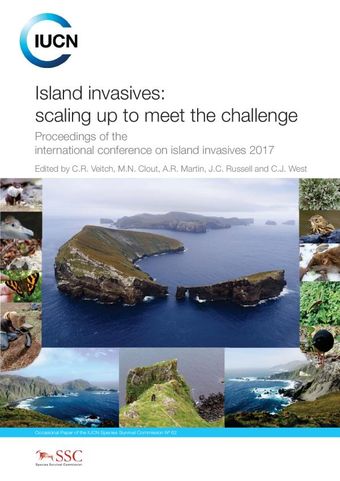Tracking invasive species eradications on islands at a global scale
- Description:
- Indicators for tracking conservation efforts at a global scale are rare but important tools for understanding trends and measuring progress towards global conservation targets. Eradication of invasive species from islands is an increasingly used conservation intervention in countries and territories around the world. With a goal of collating these efforts, the Database of Islands and Invasive Species Eradications (DIISE) holds records of the location, target species, year and outcome of invasive mammal and bird eradications on islands from around the world. The database is publicly available in Spanish and English, at , and represents a partnership between the University of California at Santa Cruz, University of Auckland, IUCN Invasive Species Specialist Group, Landcare Research and Island Conservation. The database holds records for more than 1,200 eradication attempts. This database will continue to be added to and evolve as new opportunities for its application arise; thus, we expect these numbers to change over time as new events are added and knowledge about existing events improves.
- Display date:
- 2019
- Location:
- Worldwide
- Collections:
- Secretariat of the Pacific Regional Environment Programme (SPREP)
- Publisher:
- International Union for Nature Conservation (IUCN)
- Content partner:
- Secretariat of the Pacific Regional Environment Programme (SPREP)
- Availability:
- Not specified
-
Copyright status: All rights reservedFind out more about what you are able to do with this itemThis item is all rights reserved, with means you'll have to get permission from Secretariat of the Pacific Regional Environment Programme (SPREP) before using it. For more information, please see our use and reuse page.What can I do with this item?Non-infringing useNZ copyright law does not prevent every use of a copyright work, and this item may be hosted by an international institute or organisation. You should consider what you can and cannot do with a copyright work.No sharingYou may not copy and/or share this item with others without further permission. This includes posting it on your blog, using it in a presentation, or any other public use.No modifyingYou are not allowed to adapt or remix this item into any other works.No commercial useYou may not use this item commercially.
Related items
Welcome and warm Pasifik greetings
The information on this site has been gathered from our content partners.
The names, terms, and labels that we present on the site may contain images or voices of deceased persons and may also reflect the bias, norms, and perspective of the period of time in which they were created. We accept that these may not be appropriate today.
If you have any concerns or questions about an item, please contact us.


